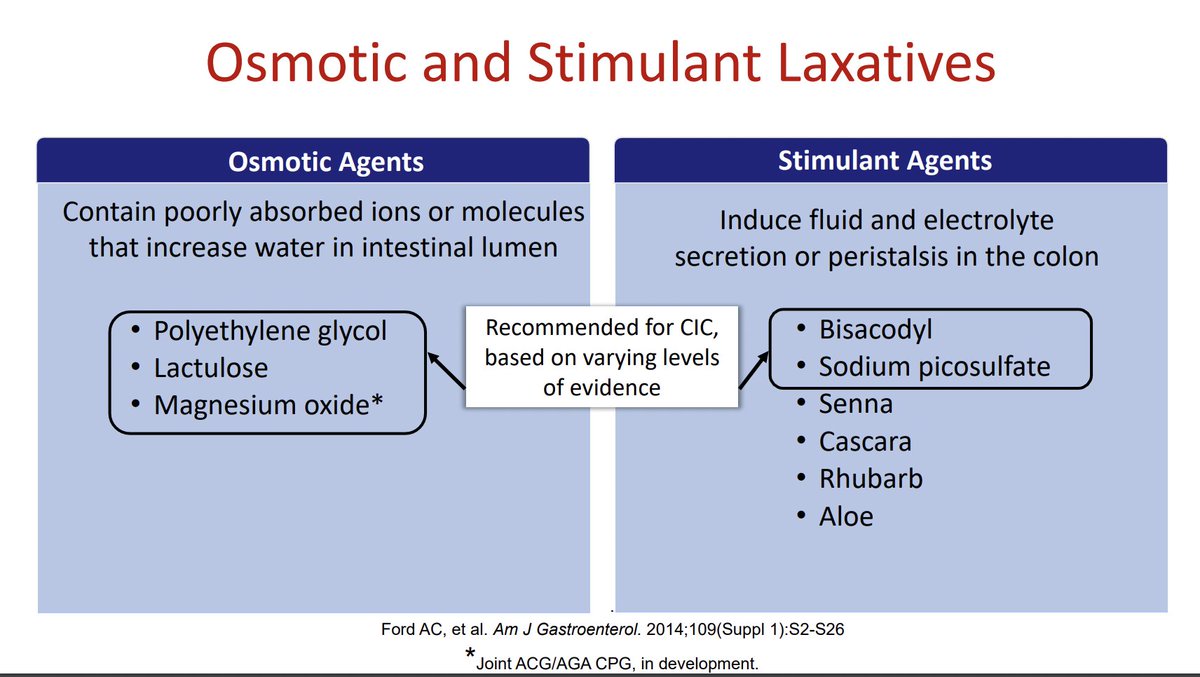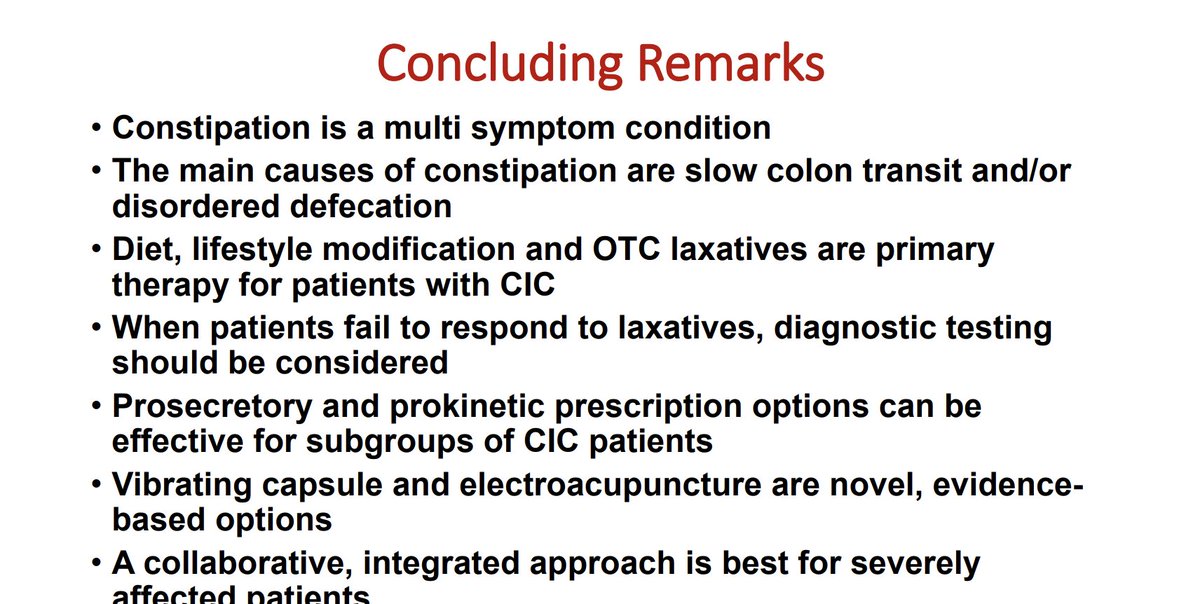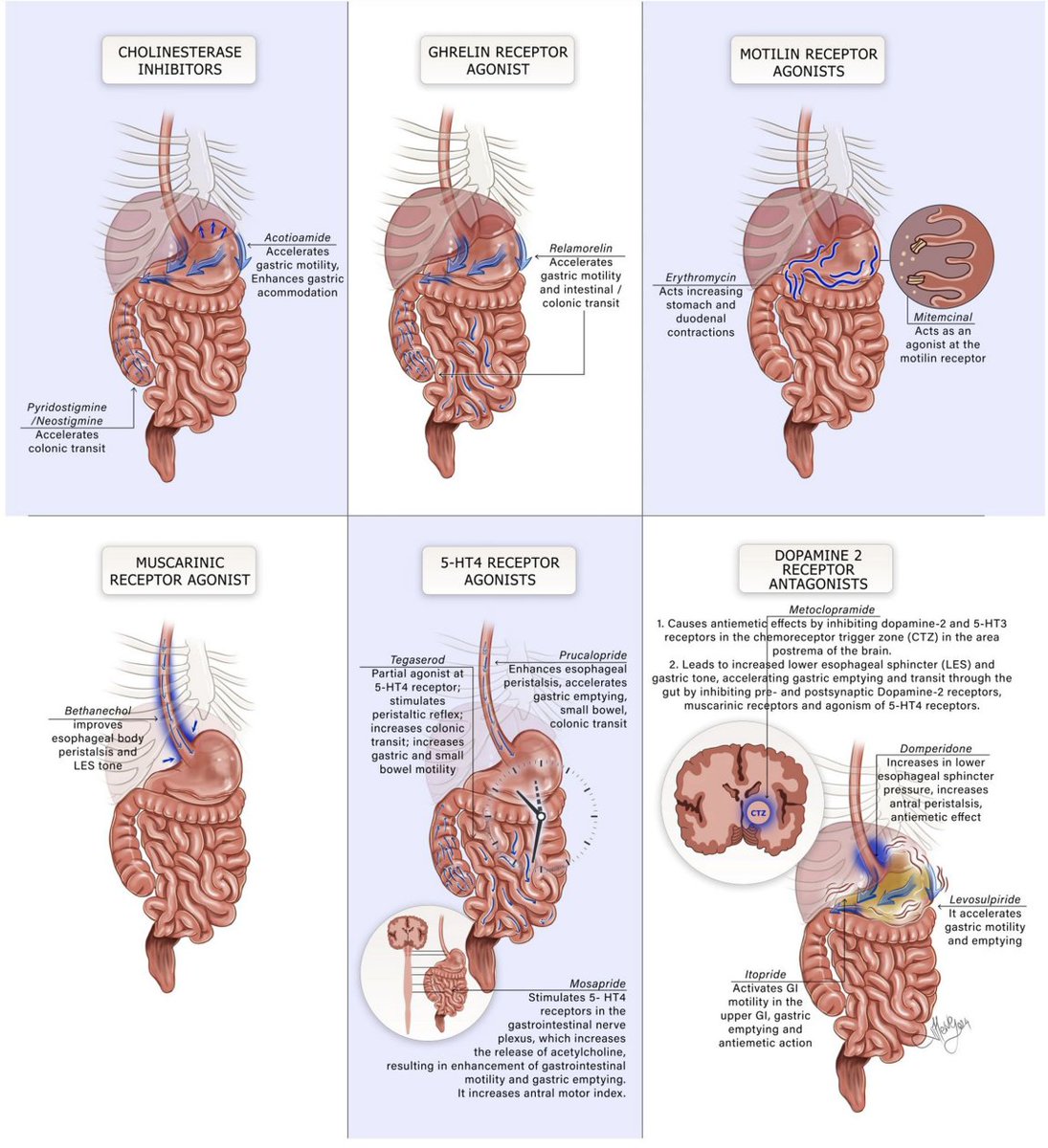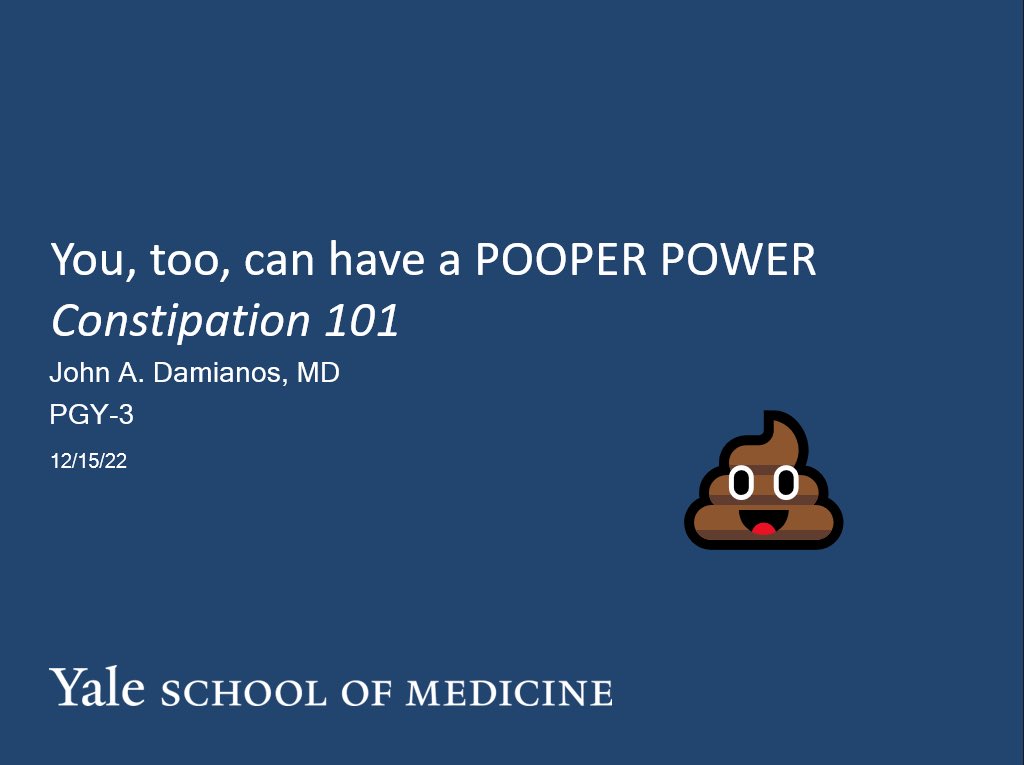#Constipation is NOT all about frequency. Ask about 👇 

Colonic transit can be normal or slow, or there can be an evacuation disorder (under-diagnosed!)
Evacuation disorders can be functional (dyssynergic defecation) or structural
💡Not all evacuation disorders can be treated with biofeedback!

Evacuation disorders can be functional (dyssynergic defecation) or structural
💡Not all evacuation disorders can be treated with biofeedback!

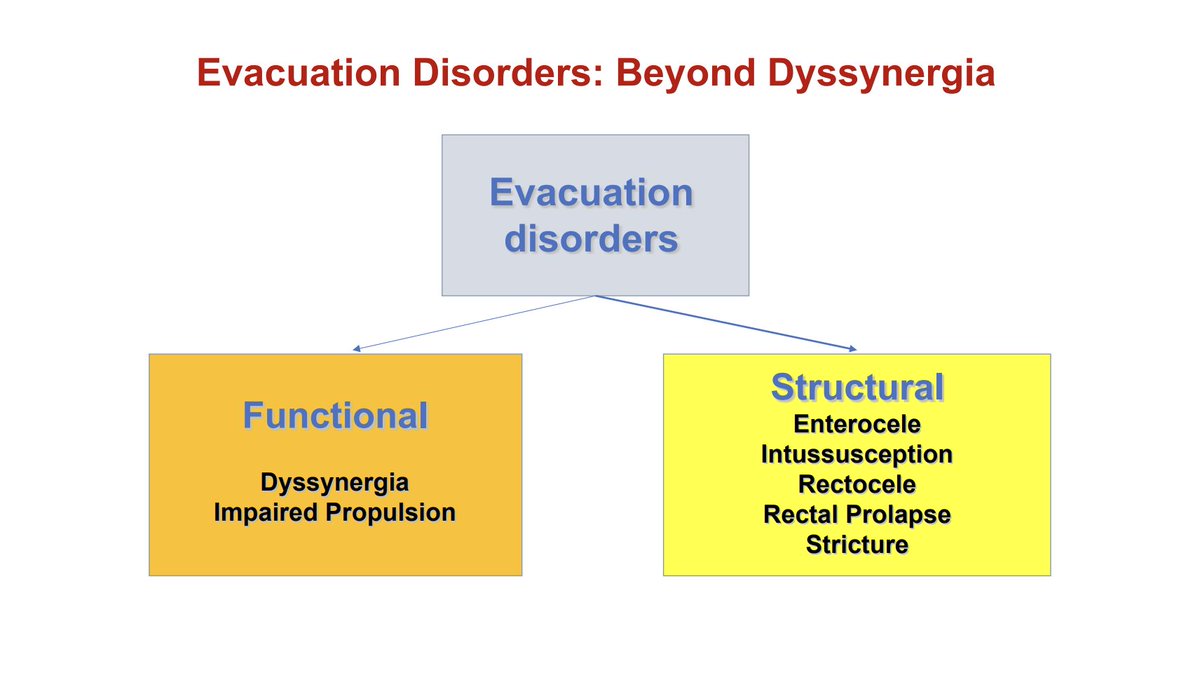
Workup of chronic constipation
💡Not only prescription drugs, but also OTC medications and supplements can cause constipation
✅empiric diet and lifestyle changes, and OTC laxatives. If ongoing symptoms, obtain anorectal physiologic testing
💡Not only prescription drugs, but also OTC medications and supplements can cause constipation
✅empiric diet and lifestyle changes, and OTC laxatives. If ongoing symptoms, obtain anorectal physiologic testing

Anorectal physiology testing
🎈begin with pelvic floor before thinking about colon for slow transit
🎈combination of ARM and BET helps guide diagnosis and treatment 👇
🎈begin with pelvic floor before thinking about colon for slow transit
🎈combination of ARM and BET helps guide diagnosis and treatment 👇

Stepwise approach for chronic #constipation 

Natural therapies for constipation: kiwi, prunes, and psyllium are all effective. Kiwi is the best tolerated (⬇️bloating and abdominal pain) 

Pharmacologic treatments for #constipation 

Pro-secretory agents
💊lubiprostone
💊linaclotide
💊plecanatide
(There's also tenapanor, but it's approved for IBS-C, not CIC)
Prokinetic agents
💊prucalopride
💊tegaserod
⚠️side effect of prucalopride: headaches (this is a systemic-acting, not locally-acting medication)

💊lubiprostone
💊linaclotide
💊plecanatide
(There's also tenapanor, but it's approved for IBS-C, not CIC)
Prokinetic agents
💊prucalopride
💊tegaserod
⚠️side effect of prucalopride: headaches (this is a systemic-acting, not locally-acting medication)


Biofeedback is an excellent treatment for dyssynergic defecation (and also may improve abdominal pain and bloating in #IBS-C) 

Electroacupuncture may be as effective as prucalopride and has fewer side effects (but requires 8 visits per week...) 

Practical treatment approach to chronic idiopathic constipation: identify and target the underlying mechanism 

Is there a role for combination pharmacotherapy in chronic constipation?
@umfoodoc: makes sense empirically, but nobody has studied this. Can use medications with different and synergistic mechanisms of action.
@umfoodoc: makes sense empirically, but nobody has studied this. Can use medications with different and synergistic mechanisms of action.
What about breath testing for intestinal methanogen overgrowth?
@umfoodoc: elevated methane is associated with constipation. However the association is not perfect. Would not recommend breath testing all constipation. But if refractory constipation and bloating, consider BT.
@umfoodoc: elevated methane is associated with constipation. However the association is not perfect. Would not recommend breath testing all constipation. But if refractory constipation and bloating, consider BT.
• • •
Missing some Tweet in this thread? You can try to
force a refresh




